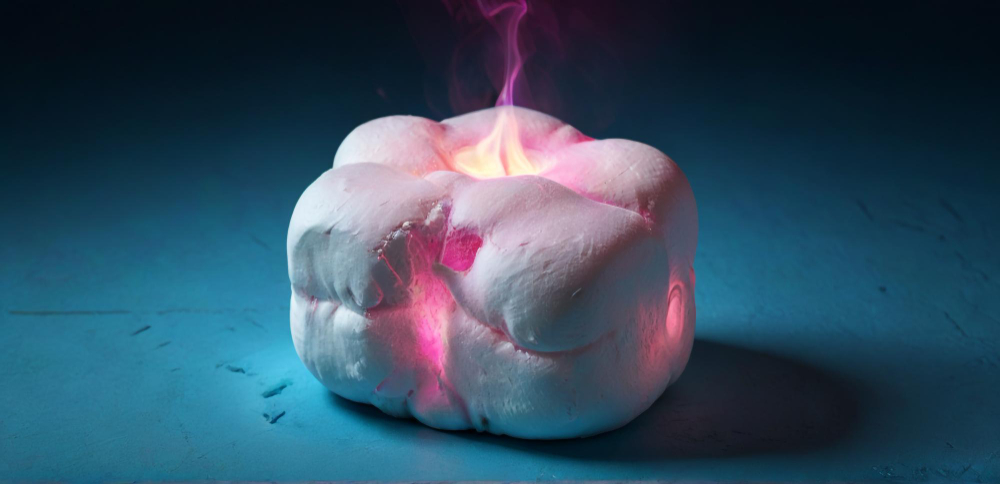Making candy involves a bit of science, and a dash of magic. Get the temperature wrong, and you’ll find yourself with a batch of grainy candy—certainly not the delightful treat you intended. One big mistake is cooking your sugar at a temperature that’s too high or changing it too quickly, leading to unwanted sugar crystals. Your sweet masterpiece then becomes a gritty disaster faster than you can say “caramel catastrophe.”
To avoid this, think of candy-making like having a toddler—patience is key, and don’t make any sudden moves! Keeping a close eye on that candy thermometer is your best bet. Steer clear of rapid heating, which makes sugar crystals party too hard, and instead simmer your mixture at a gentle, steady pace. Your future fudge will thank you.
While you’re at it, treat that sugar like a quirky family member at Thanksgiving. Stir it just enough to keep it in line, but not so much that it gets all riled up. With some practice and a watchful eye, you’ll turn your grainy candy woes into smooth, velvety bliss!
Turning Up the Heat on Candy Errors
When making candy, it’s crucial to keep an eagle eye on temperatures to avoid pesky sugar crystals and grainy textures. Proper use of a candy thermometer can be the superhero that prevents these candy catastrophes.
The Sticky Saga of Sugar Crystals
Ah, sugar crystals—the sneaky gremlins of candy making. When your sugar solution gets disturbed, crystals decide it’s party time. Stirring too late in the game or not heating enough can invite these unwanted guests. Keeping your mixture at the right temperature helps send them packing.
A common mistake leading to grainy fudge is when sugar isn’t fully dissolved. Imagine biting into a grainy mess instead of smooth heaven. To avoid this horror, keep temperatures steady and avoid jostling the pot.
The Meltdown Over Temperature Control
Temperature control can be the calm in your candy storm or the chaotic whirlwind that ruins your sweet dreams. Heating sugar too quickly can cause meltdowns – literally. High heat might seem like a fast track, but slow and steady wins the race here.
Turn your stove’s setting to medium, and let your sugar reach its bubbly zen without flipping out. Buzzkill of a moment when your patience pays off with velvety-smooth delight instead of grainy terror!
Reading the Signs: Candy Thermometer Mastery
Meet your candy thermometer: your trusty sidekick against culinary disaster. If improperly used, it could become a double agent. Make sure it doesn’t touch the pan’s bottom, where it might fib about the temperature.
Calibration is a must. Boil water, and check if it shows 212°F (100°C). If not, adjust or patch up your plan with mental math. Keep your eyes glued, take it off the heat at the right moment, and pat yourself on the back for dodging a grainy texture fiasco!
Confection Perfection: Prevention and Tricks
To achieve smooth candy, get the basics right. Master stirring techniques, use top-notch ingredients, and be patient in the cooling process. These steps help avoid common mistakes that lead to grainy textures.
Stirring the Pot: Technique and Timing
When it comes to stirring, think of yourself as a sugar ninja. Always use a heat-resistant spatula to keep your sugar mixture from sticking to the pan. Stir steadily, but not too vigorously, to prevent sneaky sugar crystals from forming.
Understanding cooking time is key. Overcooking sugar can lead to a gritty mess. Use a reliable candy thermometer and keep an eye on the temperature. Start at medium heat and avoid any sudden moves to high temperatures.
The Choco-lot Plot: Choosing High-Quality Ingredients
You can’t expect gold results from silver ingredients. Invest in top-of-the-line cocoa butter and high-quality chocolate. They create smoother and richer flavors. Stick to pure ingredients, like real butter, and avoid anything with artificial fillers.
Marshmallows can work wonders for some candy textures. They melt easily and mix into the sugar mixture, ensuring a soft result. Always check the ingredient labels to avoid any unwelcome surprises.
The Cool Down: Patience in the Cooling Process
Ah, patience—the virtuoso of confection making. Once your candy reaches the perfect temperature, move it to room temperature for cooling. Do not rush this step by popping it into the fridge.
Letting the candy cool naturally helps avoid creating a grainy texture. Slow cooling allows the sugar crystals to settle properly.
If you’re prone to impulsive decisions (who isn’t?), try using a double boiler. It creates a gentler warming trend and will leave you less inclined to speed up the cooling process.
